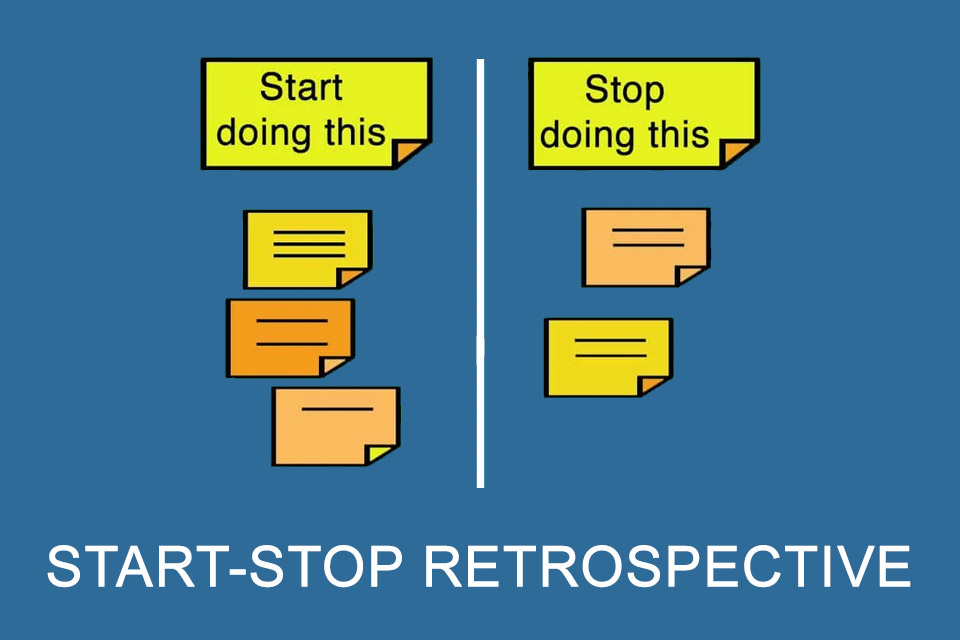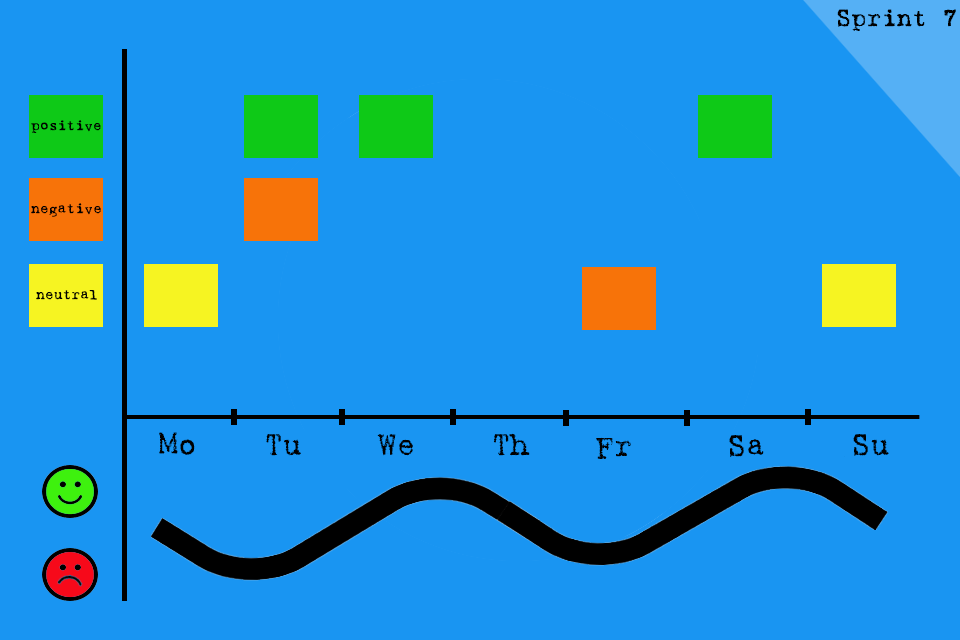What is a Start-Stop Retrospective?
Smartpedia: A start-stop retrospective is a recap where a team records what should be done or refrained from doing in the future.
Start doing this and Stop doing this
Retrospectives are very important in projects and developments in order to learn from the recent past for future cooperation. The start-stop retrospective is a form of a recap. If a development team uses Scrum, for example, then the developers, the product owner and the Scrum master meet at the end of the current sprint and exchange information about the collaboration. The Scrum Guide defines it as follows: “The Scrum Team discusses what went well during the Sprint, what problems it encountered, and how those problems were (or were not) resolved. In this way, the team identifies the most helpful changes to improve its effectiveness”. The Start-Stop Retrospective breaks down these “most helpful changes” into two groups:
- “Start doing this” and
- “Stop doing this”.
In other words, it is about recording the things that the team wants to use or apply henceforth, or that should be refrained from in the future. Each team has to find out for itself what these things are. Basically, the Scrum Guide gives a hint: “The Scrum Team reviews how the last Sprint went in terms of individuals, interactions, processes, tools and its Definition of Done. The elements reviewed often vary depending on the work domain.” “Start doing this” and “Stop doing this” therefore mainly refer to
- individuals,
- interactions,
- processes,
- tools or the
- Definition of Done.
Tips for the Start-Stop Retrospective
There are a number of tips for conducting a start-stop retrospective:
- Even if this form of retro seems simple at first glance, at second glance it is more a variation of the well-known start-stop-continue retrospective. This retrospective defines a third category with “continue”, in which the things that are to be continued are recorded. It is important to develop a common understanding about this. Without this understanding, the success of a start-stop retrospective is practically impossible.
- If start-stop is a variation of start-stop-continue, then it may make sense to change the format after a few retros. Discussing the things to be retained in each retrospective is unnecessary after a certain point. However, if something changes in the common understanding, participants can of course put up a “Stop doing this” for discussion at any time. This would then even be a special sign of “team maturity”.
- As with all retrospectives, the Vegas Rule (“What happens in Vegas, stays in Vegas”) and the Golden Rule (mutual respect and appreciation) should apply.
- Ideally, participants agree on a timebox for formulating reviews.
- Usually, the Scrum Master moderates the retrospective, but if it is a “well-rehearsed team”, another person could also take on this task.
It is often recommended to use additional formats such as brainwriting to create a balance between introverted and extroverted team members. In principle, this is a sensible suggestion, although it probably has somewhat more effect with the “usual” start-stop-continue retrospective than with the start-stop-retrospective variant. As long as there is an “imbalance” between the participants, it is best to do without the advanced variant.
Impulse to discuss
Should the team choose the format of the retrospective itself?
Notes:
If you like the article or would like to discuss it, please feel free to share it in your network. And if you have any comments, please do not hesitate to send us a message.
Here you will find additional information from our Smartpedia section:



